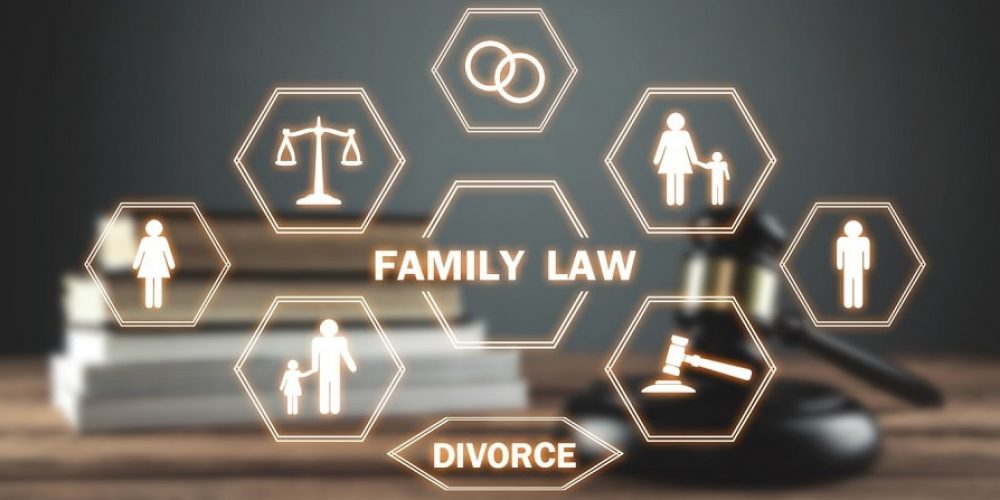Understanding Divorce Laws in the USA: A Lawyer’s Guide,Separation can be an overwhelming interaction, loaded up with profound and lawful intricacies. For those exploring this difficult territory, understanding the separation regulations in the USA is essential. Whether you’re an attorney looking to extend your insight or a client needing to be educated, having an unmistakable handle of the lawful structure can fundamentally influence the result of a separation case. This guide gives an outline of key parts of separation regulations in the USA, offering important bits of knowledge for lawful experts and clients the same.
Justification for Separation
In the USA, separate from regulations differ by state, however there are by and large two principal justification for separate:
No-Issue Separation: Most states take into account no-shortcoming divorce, where neither one of the gatherings needs to demonstrate bad behavior by the other. Shared convictions incorporate beyond reconciliation contrasts or a hopelessly broken marriage. This approach improves on the cycle and spotlights on the disintegration of the marriage instead of allocating fault.
Issue Based Separation: A few states actually perceive shortcoming based justification for separate, where one party should demonstrate the other’s unfortunate behavior. Grounds could incorporate infidelity, savagery, deserting, or detainment. Albeit more uncommon today, shortcoming based separations can impact the division of resources and spousal help in specific wards.
Division of Property
The division of conjugal property is a critical part of separation regulation:
Local area Property States: In people group property states (like California, Texas, and Arizona), most property procured during the marriage is thought of as mutually possessed and is partitioned similarly between the mates. This standard applies to income, obligations, and property.Understanding Divorce Laws in the USA: A Lawyer’s Guide.
Impartial Appropriation States: In evenhanded circulation states (like New York, Florida, and Illinois), property is separated decently however not really similarly. Courts think about different variables, including the length of the marriage, the commitments of every mate, and their monetary conditions.

Youngster Care and Backing
Deciding youngster guardianship and backing is in many cases one of the most disagreeable parts of separation:
Guardianship Types: Care game plans can be joint or sole. Joint care includes the two guardians sharing liabilities and independent direction, while sole guardianship awards one parent essential power. Courts by and large blessing plans that serve the wellbeing of the kid, taking into account factors like parental capacity, the kid’s requirements, and the current relationship with each parent.
Kid Backing: Youngster support is planned to cover the kid’s fundamental requirements, including food, lodging, schooling, and medical care. The sum and length of youngster support are resolved in view of state rules, which frequently think about the pay of the two guardians and the necessities of the kid.
Spousal Help (Provision)
Spousal help, or support, might be granted to one companion to give monetary help during or after the separation:
Sorts of Provision: There are different kinds of divorce settlement, including transitory (during the separation cycle), rehabilitative (to assist a life partner with becoming independent), and long-lasting (long haul support). The sort and sum granted rely upon factors like the length of the marriage, the beneficiary’s necessities, and the payer’s capacity to help.
Alteration and End: Support arrangements can be adjusted or ended in light of changes in conditions, like the beneficiary’s monetary circumstance or remarriage.
Legitimate Techniques and Courses of events
The systems and courses of events for separation can differ fundamentally:
Seeking legal separation: The cycle regularly starts with one companion recording a request or grumbling for separate from in the proper court. The other companion should be presented with legal documents and allowed an opportunity to answer.Understanding Divorce Laws in the USA: A Lawyer’s Guide.
Holding up Periods: Many states force holding up periods before a separation can be settled. These holding up periods can go from a couple of months to north of a year, contingent upon state regulations and whether the separation is challenged or uncontested.
Intervention and Elective Question Goal
Intervention and elective question goal (ADR) techniques are progressively used to determine separate from debates beyond court:
Intercession: Intervention includes an unbiased outsider aiding the companions arrange and agree on different issues. It is frequently less ill-disposed and can prompt more friendly settlements.
Cooperative Separation: In cooperative separation, the two players work with their particular legal counselors to arrive at a settlement without going to court. This approach accentuates collaboration and critical thinking.

End
Understanding separation regulations in the USA is fundamental for successfully exploring the legitimate intricacies of separation. Whether you are a legal advisor addressing clients or an individual going through a separation, being educated about reason for separate, property division, guardianship and backing, spousal help, lawful methods, and elective debate goal can enormously impact the result of the case. By remaining learned and ready, you can more readily deal with the difficulties of separation and work towards a goal that addresses your issues and interests.
